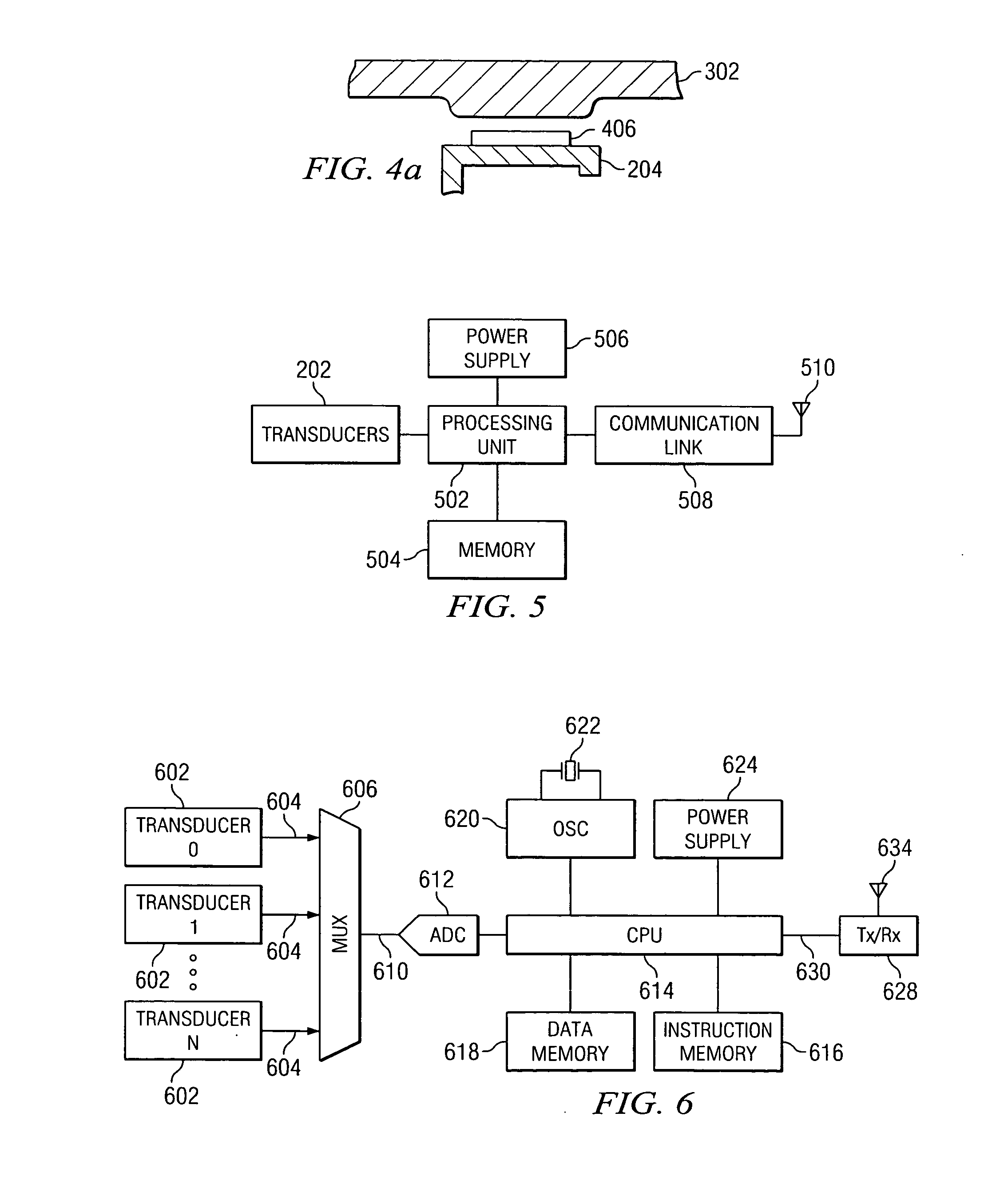Prosthetic intervertebral spinal disc with integral microprocessor
a technology of intervertebral discs and microprocessors, applied in the field of artificial, constrained motion spinal discs, can solve problems such as pain or paralysis in the area of its distribution, damage to the spinal disc, and detrimental phenomena
- Summary
- Abstract
- Description
- Claims
- Application Information
AI Technical Summary
Problems solved by technology
Method used
Image
Examples
first embodiment
[0078] Referring now to FIG. 13, there is illustrated the output of a transducers 202a-202c responsive to movements of the intervertebral disc 100 caused by movement of the patient. The data from the transducers may be stored in a number of fashions. In a first embodiment, a 3D resultant vector is generated from the outputs of each of the transducers. The resultant slope and magnitude of the vector may then be stored in memory if these values exceed certain predetermined thresholds. If memory storage is limited a determination and deletion of a smallest presently stored resultant vector may be made. This will create space for the storage of characteristics relating to the new larger resultant vector.
second embodiment
[0079] In a second embodiment, the entire waveform output from each of the transducers 202a-202c may be stored in memory for a selected period of time. In this situation the thresholds relating to the occurrence of an event that required the storage of data would have to be set sufficiently high that data was only stored a few times per day. If waveforms were stored too frequently, the memory space would quickly be exhausted and battery power would be depleted.
third embodiment
[0080] In a third embodiment, rather than storing the entire output waveform 1302 within the memory 504, the central processing unit 502 generates various characteristics describing the output waveform 1302. These parameters include a maximum value 1304 representing the peak output of the transducer waveform 1302 and the slope value 1306 represents the maximum slope of the output waveform 1302 of the transducer and provides an indication of the intensity of the pressures being placed between the upper plate 106 and lower plate 108 of the artificial disc 100.
[0081] The central processing unit 502 includes two separate modes for transmitting data using its communications link 508 and antenna 510. The operation of these modes are more fully illustrated in the flow diagram of FIG. 14. After occurrence of the power on self test at step 1402, the CPU enters the sleep mode at step 1404. Inquiry step 1406 determines whether or not a waking requirement has been initiated for the sleep mode. ...
PUM
 Login to View More
Login to View More Abstract
Description
Claims
Application Information
 Login to View More
Login to View More - R&D
- Intellectual Property
- Life Sciences
- Materials
- Tech Scout
- Unparalleled Data Quality
- Higher Quality Content
- 60% Fewer Hallucinations
Browse by: Latest US Patents, China's latest patents, Technical Efficacy Thesaurus, Application Domain, Technology Topic, Popular Technical Reports.
© 2025 PatSnap. All rights reserved.Legal|Privacy policy|Modern Slavery Act Transparency Statement|Sitemap|About US| Contact US: help@patsnap.com



